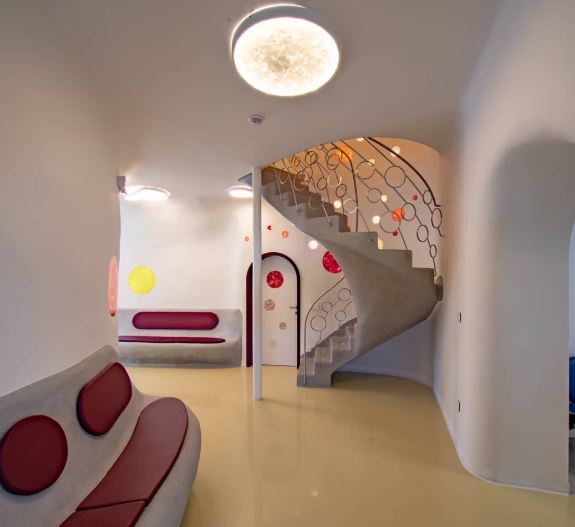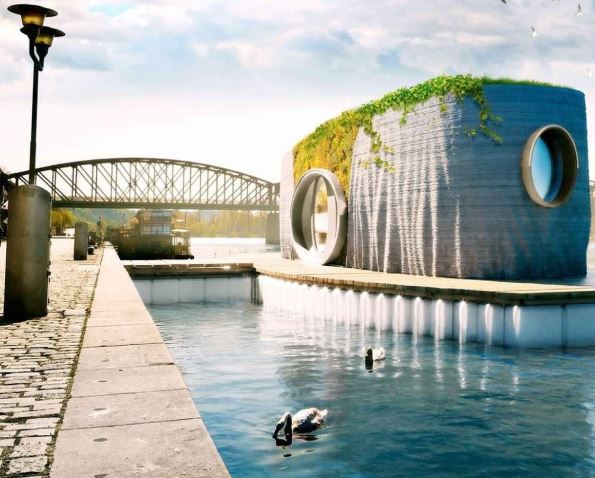Its name is Prvok (Protozoon) and it will be the first 3D printed house of Czech Republic. Designed by sculptor Michal Trpak and building society Stavebni sporitelna Ceske sporitelny (member of Erste group), the house would be partially self-sufficient and ideal for both earth and water.
With a floor area of 43 square meters, the house will require two days for the structural work and two months for the whole completion.
Unlike conventional houses, this 3D printed house will integrate eco technologies such as recuperation, recirculation shower, remote control, green roof, as well as reservoirs for drinking, utility and sewage water.
“The house is designed to last at least a hundred years in any environment. “In the future, owners can destroy the building once it has run its life, and print it again with the same material directly on the location,” adds Michal Trpak.
Is the construction of a three room- floating house cost-efficient?

The house will have a bathroom with toilet, living room with a kitchen and a bedroom.
The calculations of the project sponsor, building society Stavebni sporitelna Ceske spořitelny (Buřinka), show that a printed house will be built seven times faster than a conventional brick house. It will require less construction time and generate demolition waste which now accounts for 46% of total waste production in the Czech Republic and similarly in Europe.
The Prvok house will be printed using a robotic arm through which the special material flows directly to the destination. The robot prints at a speed of 15 centimeters per second. The robot itself is a Czech innovation from the workshop of Trpak’s other initiative Scoolpt.
“Compared to conventional brick buildings, 3D printing also generates up to 20% fewer CO2 emissions, which the European Union aims to cut by 30% by 2030 (compared to 2005). It requires only about 25 workers to print one house (forty less than usual). The prices in serial production can hit a half of the cost of a conventional passive house. The self-sufficiency delivers further operating cost savings,” says Libor Vosicky, CEO of Burinka.
According to analysts from building society Stavebni sporitelna Ceske sporitelny, buildings and construction sector all overEurope encounter several challenges. “In the Czech Republic, the number of skilled employees in construction has decreased by 10% in ten years, while the number of construction contracts has increased by 45% in the same period.” concludes Vosicky.
Remember, you can post free of charge job opportunities in the AM Industry on 3D ADEPT
Media or look for a job via our job board. Make sure to follow us on our
social networks and subscribe to our weekly newsletter : Facebook, Twitter, LinkedIn & Instagram ! If you want to be featured
in the next issue of our digital magazine or if you hear a story that needs to
be heard, make sure to send it to contact@3dadept.com






